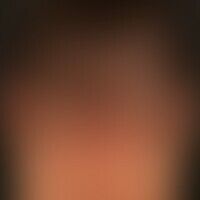Folliculitis decalvans Images
Go to article Folliculitis decalvans


Folliculitis decalvans. 3 years of persistent scarring hair loss, with initially slight itching. In addition to purulent folliculitis, there are also incised tufts of hair with surrounding erythema and reflecting hairless areas.

Folliculitis decalvans. 24 months of persistent scarring hair loss, with initially slight itching. In addition to purulent folliculitis, there are also incised tufts of hair with surrounding erythema and numerous small, shiny, hairless areas.
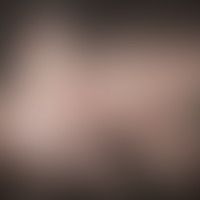
Folliculitis decalvans. scarring hair loss that has been progressing for several years, with itching and occasional pain. in addition to purulent folliculitis, scaly tufts of hair with surrounding erythema appear.

Folliculitis decalvans: extensive scarring inflammation with destruction of the hair follicles, typical tuft hair formation.


Folliculitits decalvans: Scarring alopecia with shiny hairless area and tufts of hair at the edges.
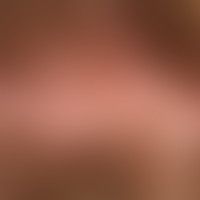
Folliculitits decalvans: Close-up with shiny atrophy of the scalp and tufts of hair; the keatotic secretions are signs of the ongoing inflammatory process.

folliculitis decalvans. low inflammatory, "burnt out" disease state. appearance of scarred alopecia with discrete, heart-shaped reddening around the marginal hair follicles. the present condition approaches the finding of "pseudopelade brocq".

Folliculitis decalvans. 4 years of persistent, chronically active, progressive, red, follicle-related, rough, partly scaly, partly solitary, partly confluent papules on the capillitium of a 46-year-old man. In between, skin-coloured or white, hard, smooth, scarred plaques appear on which the follicles are completely missing.

Folliculitis decalvans. 12 months of persistent scarring hair loss, with initially slight itching in a 66-year-old female patient. In addition to purulent folliculitis, tufted hairs with surrounding erythema and numerous small, shiny, hairless areas appear.

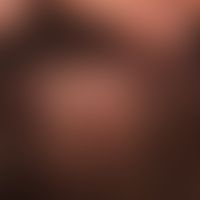
Folliculitits decalvans: scarring alopecia with shiny hairless area and tufts of hair at the edges.
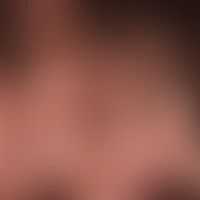
Folliculitits decalvans: scarring alopecia with shiny hairless area and tufts of hair at the edges. detail illustration

Folliculitis decalvans: multiple, roundish scarring up to 1.0 cm in size. inflammatory activities still detectable in places. combination is associated with a bsiher therapy-resistant acne vulgaris.

Folliculitis decalvans: Alopecia like a footstep with fresh and older scars. Left picture: Inflammatory area with yellowish crusts. The process has been going on for several years, in attacks which last several months. Oral antibiotics improve the severity of the attacks.
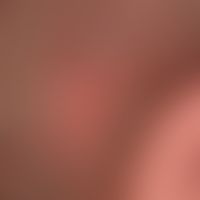
Folliculitis decalvans, circumscribed scarring alopecia with extensive reddening of the skin.

Folliculitis decalvans, scarredfinal state with tufts of hair running diagonally through the scalp.




Folliculitis decalvans, massive extensive scarring, currently no inflammatory activity of the process.

Folliculitis decalvans: Initial changes, scalp appears swollen, with sunken, conspicuously prominent follicular structures, occasional tufts, individual follicles without hairline.

Folliculitis decalvans. One year later, progressive scarring, obvious follicular inflammation.


Folliculitis decalvans: developmental stages of the disease over a period of 7 years.


